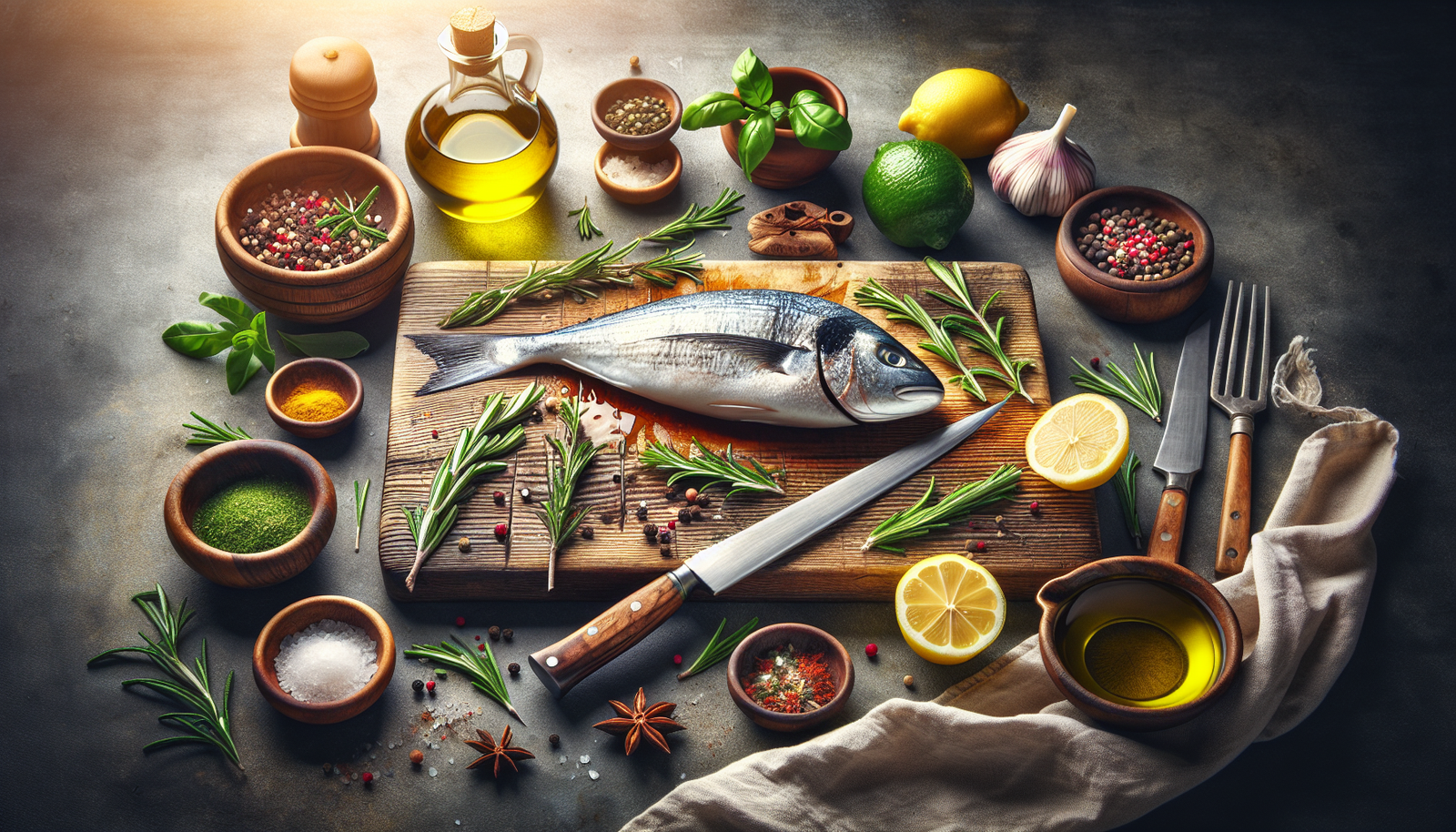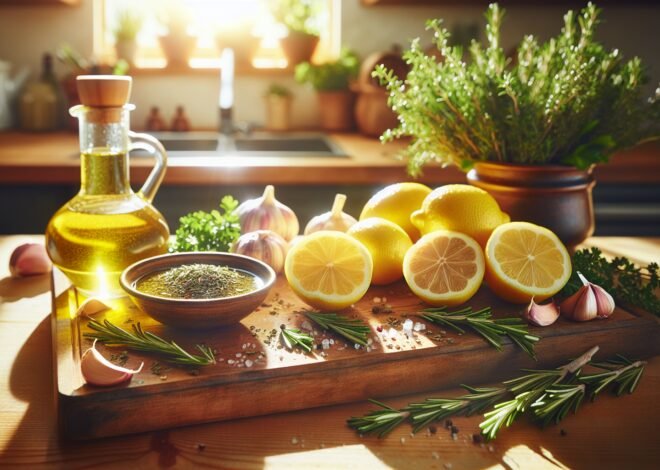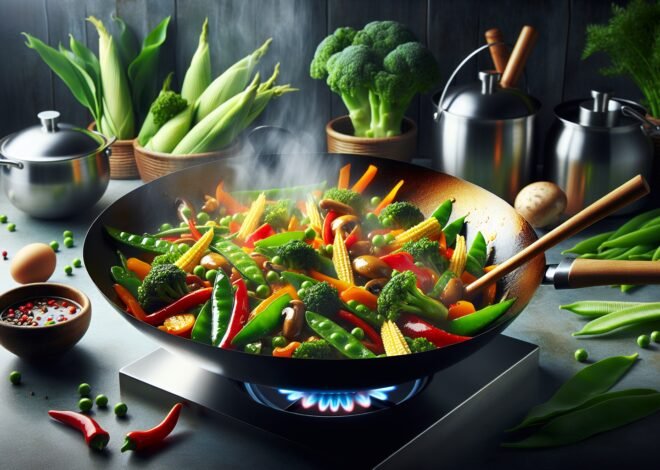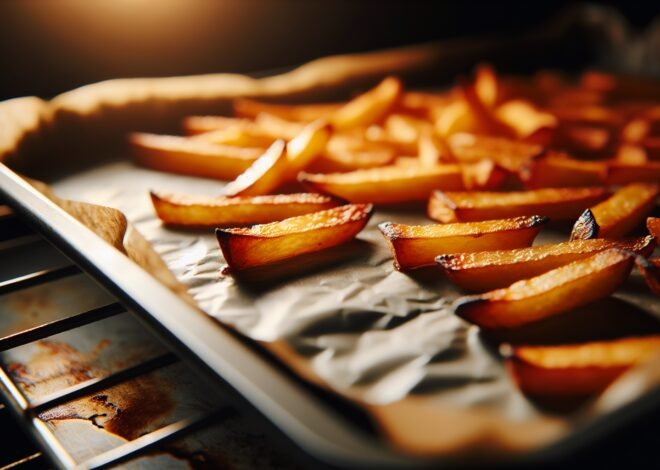
How to Cook Whole Fish: Techniques and Tips for Success
Cooking whole fish is a rewarding and flavorful endeavor that captivates seafood enthusiasts. Did you know that retaining the bones and skin during cooking enhances the taste and keeps the meat moist? This guide delves into essential techniques and tips for success in cooking whole fish, providing insights into selecting the freshest catch, preparing it correctly, and exploring various cooking methods such as grilling, baking, and steaming. Whether you’re a novice or a seasoned cook, understanding these techniques will elevate your seafood culinary skills and bring a taste of the ocean to your table. Embrace the art of cooking whole fish, and discover a world of flavors that’s simple yet sophisticated.
Benefits of Cooking Whole Fish
Cooking whole fish offers a multitude of advantages that go beyond just satisfying hunger. The approach is a culinary delight that brings rich flavors, nutritional benefits, and environmental awareness to the table. Embracing the concept of cooking fish whole is an experience that tantalizes taste buds while promoting a healthy and sustainable lifestyle.
Nutritional Advantages of Whole Fish Cooking
Whole fish aren’t just delicious; they’re packed with nutrients essential for a balanced diet. When you cook fish whole, you retain more of its natural oils, which are rich in omega-3 fatty acids. These oils contribute to heart health, reduce inflammation, and support brain function. Unlike fillets, whole fish also provide vital vitamins and minerals found in bones, skin, and head.
Cooking fish with its bones can increase calcium intake. This mineral is crucial for bone health and reducing the risk of osteoporosis. Additionally, the skin of the fish contains collagen and other beneficial proteins that are often lost in fillets. This aspect makes whole fish a superior choice for those seeking maximum nutritional benefits without supplements.
The head of the fish is a powerhouse of nutrients, offering brain-boosting compounds like DHA. Consuming these parts can enhance cognitive function and support a healthy nervous system. The nutritional benefits of whole fish go beyond the standard, offering a comprehensive package of health-boosting elements.
Sustainability and Environmental Considerations
Cooking whole fish aligns seamlessly with sustainable eating practices. Choosing to cook the entire fish helps reduce food waste, as more parts of the fish are consumed rather than discarded. This method ensures that consumers make the most out of each catch, promoting a more responsible approach to seafood consumption.
By opting for whole fish, you support fishing practices that prioritize sustainability. Many fisheries focus on responsible harvesting methods when selling whole fish, ensuring that the ecosystems are less strained. This eco-friendly choice can contribute to the preservation of marine biodiversity and the protection of fragile ocean environments.
Embracing whole fish cooking is a small but significant step toward a greener lifestyle. It encourages mindful consumption and an appreciation for the resources provided by the sea. The focus on sustainability can also inspire others to make environmentally conscious decisions in their culinary practices.
Flavor and Texture Advantages Over Fillets
Whole fish offer a culinary experience that fillets simply can’t match. Cooking fish whole allows flavors to intensify, as the bones and skin impart additional depth to the dish. The natural oils present in the fish enhance its flavor, making each bite a savory delight.
Texture is another area where whole fish shine. Cooking with the skin on helps retain moisture, resulting in tender, juicy flesh. This method ensures a delectable texture that is often compromised when fish is filleted. The skin also provides a crispy layer when cooked, adding a delightful contrast to the tender meat beneath.
The visual appeal of a whole fish on the plate is unmatched. It’s a feast for the eyes as much as it is for the palate. The presentation adds a rustic elegance to meals, transforming an ordinary dinner into a memorable occasion.
Preparing Whole Fish for Cooking
Getting ready to cook whole fish might seem intimidating, but it’s simpler than it appears. With the right guidance and tools, you can prepare your fish with confidence. This section will walk you through selecting, cleaning, and prepping fish efficiently, ensuring a smooth cooking process and a delicious result.
Selecting the Right Type of Fish for Whole Cooking
Not all fish are created equal when it comes to whole cooking. Some types are better suited for this method due to their size, flavor, and texture. Popular choices include snapper, trout, and bass. These fish have a firm texture and a flavor that holds up well to various cooking techniques.
When choosing fish, freshness is key. Look for clear eyes, shiny skin, and a fresh sea smell. These indicators ensure that you’re selecting a quality fish that will enhance your meal. It’s also essential to consider the size of the fish and your cooking equipment to ensure a proper fit.
Don’t hesitate to ask your fishmonger for recommendations and freshness tips. Their expertise can guide you to the best choice for your culinary needs. A little knowledge goes a long way in making your cooking experience enjoyable and successful.
Cleaning and Gutting a Whole Fish Safely
Proper cleaning and gutting are crucial steps in preparing whole fish. Begin by rinsing the fish under cold water to remove surface impurities. Using a sharp knife or scissors, make an incision along the belly, from the head to the tail.
Remove the innards carefully, taking care not to puncture any organs. Rinse the cavity thoroughly to eliminate any remaining residue. Pat the fish dry with paper towels to ensure a crisp skin during cooking.
Scaling the fish is another important step, especially if you plan to serve it with the skin on. Use a fish scaler or the back of a knife to gently remove the scales, working from tail to head. This process can be messy, so conducting it over a sink is advisable.
Essential Kitchen Tools for Whole Fish Preparation
Having the right kitchen tools makes preparing whole fish a breeze. A sharp fillet knife is essential for gutting and scaling, ensuring precise cuts and reducing the risk of injury. Fish scalers or the back of a knife are useful for removing scales efficiently.
Kitchen shears come in handy for trimming fins and making precise cuts. A fish spatula is ideal for flipping and serving the fish without causing damage. It’s designed to handle the delicate texture of fish, making it a valuable tool in your arsenal.
Investing in a good fish cleaning station or board can make the preparation process cleaner and more organized. This setup allows you to handle the fish comfortably and ensures a smooth transition from preparation to cooking.
Cooking Techniques for Whole Fish Success
Whole fish cooking opens up a realm of culinary possibilities with its diverse techniques. From grilling to baking and steaming, each method offers unique flavors and textures. This section will guide you through mastering these techniques, ensuring your whole fish dishes are nothing short of perfect.
Mastering the Art of Whole Fish Grilling
Grilling whole fish is an art that enhances its natural flavors with a smoky touch. Start by preheating your grill to medium-high heat. Ensure the grates are clean and well-oiled to prevent sticking. A fish that’s about two pounds is ideal for grilling, as it cooks evenly.
Season the fish with olive oil, salt, and pepper. You can also stuff the cavity with herbs and lemon slices for added flavor. Place the fish on the grill, allowing it to cook for about 5-7 minutes per side, depending on its thickness.
Use a fish spatula to gently flip the fish. The skin should be crispy, and the flesh opaque when done. Grilling imparts a unique charred flavor, elevating the dish to new heights. Serve with a squeeze of lemon for a fresh and tangy finish.
Baking Whole Fish Perfectly in the Oven
Baking is a foolproof method that locks in moisture and flavors. Preheat your oven to 400°F (200°C). Line a baking sheet with parchment paper or use a baking dish that fits the fish comfortably. Season the fish with olive oil, salt, and herbs of your choice.
Score the skin to ensure even cooking. Stuff the cavity with aromatics, such as garlic, onion, and herbs. This technique allows the flavors to infuse throughout the fish, enhancing its taste. Bake the fish for approximately 20-25 minutes, depending on its size.
The fish is ready when the flesh is opaque and flakes easily with a fork. Baking maintains the fish’s integrity, providing a tender, juicy outcome. A drizzle of herb-infused oil or a sprinkle of fresh herbs can add the finishing touch.
Expert Tips for Steaming Whole Fish Evenly
Steaming is a gentle cooking method that highlights the fish’s natural flavors. Start by setting up a steamer basket over a pot of simmering water. Ensure the fish fits comfortably within the basket without crowding.
Season the fish with ginger, soy sauce, and sesame oil for an Asian-inspired twist. Place the fish in the basket and cover with a lid. Allow it to steam for about 15-20 minutes, depending on its size and thickness.
The fish is done when the flesh is opaque and firm to the touch. Steaming preserves the fish’s delicate texture and nutritional value. Garnish with fresh cilantro and sliced chilies for a burst of color and flavor.
Conclusion
Cooking a whole fish involves selecting a fresh fish, usually with clear eyes and firm flesh. Begin by cleaning and scaling the fish, removing the innards, and rinsing it thoroughly. Season the fish inside and out with herbs, spices, or marinades of choice. It can be cooked using various methods like baking, grilling, or steaming, ensuring even cooking through flipping if necessary. Serve the cooked whole fish with garnishes such as lemon slices, herbs, or sauces for added flavor.
FAQ
What are the best types of fish to cook whole for beginners?
For those new to cooking whole fish, options like snapper, branzino, and trout are excellent choices. These fish are easy to handle and have mild flavors, making them ideal for various recipes.
How do you ensure a whole fish is properly cooked?
Check for opaque flesh and easily flaking meat to confirm doneness. A meat thermometer should read around 145°F (63°C) when inserted into the thickest part of the fish.
What are essential spices and herbs for seasoning whole fish?
Basil, dill, thyme, and parsley bring out the natural flavors of fish. Combine them with spices like paprika, garlic powder, and lemon zest for a flavorful dish.
Can you cook whole fish on a barbecue grill?
Grilling whole fish is possible and delicious. Use a well-oiled grill to prevent sticking, and consider wrapping the fish in foil or using a fish basket for easy handling.
What are common mistakes to avoid when cooking whole fish?
Avoid overcooking, which makes the fish dry. Under-seasoning can dull flavors, so ensure a balanced use of herbs and spices. Also, ensure the grill or pan is preheated to avoid sticking.
How can you tell if a whole fish is fresh before cooking?
Look for bright, clear eyes and shiny, metallic skin. Fresh fish should have a mild, ocean-like smell. Firm flesh that bounces back when pressed is another good indicator of freshness.











